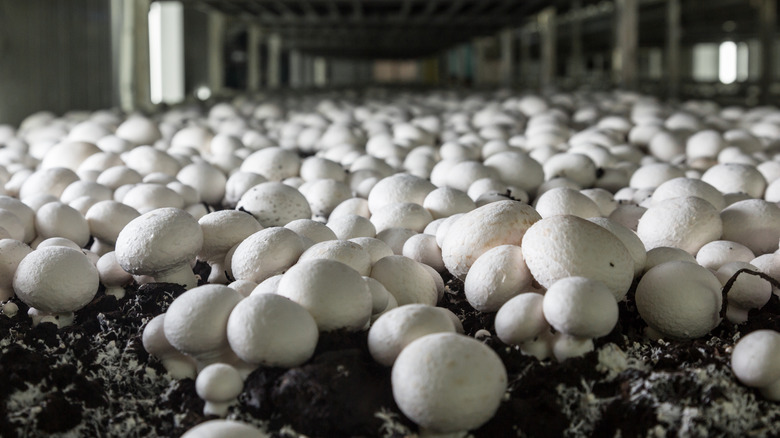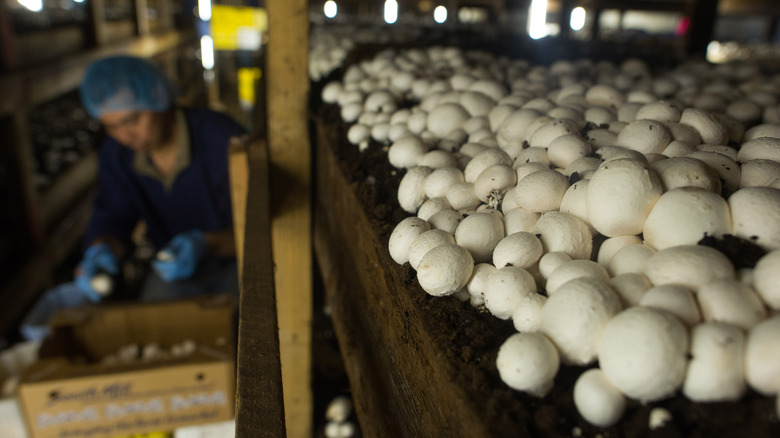The Mushroom Capital Of The World Might Surprise You
Where do you think most of your mushrooms come from? Somewhere warm and agriculture-heavy, like Florida or California? Maybe you think your "fanciest" mushroom varieties come from somewhere like France. In actuality, half of America's mushrooms are grown in a small town in Pennsylvania. Kennett Square is known as the Mushroom Capital of the World. Located an hour outside of Philadelphia, Kennett Square's original mushroom farmers, according to NPR, were some 1800s Quakers who wanted to grow something in the underutilized spaces underneath their flower beds.
The Quakers hired some Italians to work on their new mushroom farms, who in turn started their own mushroom farms. In less than a century, there were hundreds upon hundreds of mushroom farms in and around Kennett Square, in Chester County, Pennsylvania. Now, the area still retains its ranking as the top spot for mushroom growing. According to The Philadelphia Inquirer, as of 2018, Pennsylvania as a whole had 54 brown and white mushroom farms, with 47 of those brown and white mushroom farms still in Chester County (which is on top of the more than 200 specialty mushroom farms in the state).
Why is Pennsylvania the mushroom capital of the world?
There's really no reason why Pennsylvania couldn't be the mushroom capital of the world. Mushrooms are grown indoors, so they don't need any special climate — just people willing to do the work and invest in the industry. And as The Philadelphia Inquirer points out, that's exactly what's happening in Chester County — in recent years, growers in the area have planned expansions worth $115 million, which adds 3% to the U.S. mushroom production capacity.
But is the mushroom capital of the world becoming too big? That's what some farmers worry, as they told NPR. While the mushroom farming community in Chester County, Pennsylvania, is a tight-knit group, with an admirable work ethic, finding housing for all the agricultural workers, many of who come from Mexico, is a struggle, and shipping in the supplies needed for mushroom growing is becoming more expensive, as supply availability decreases as mushroom production increases.

